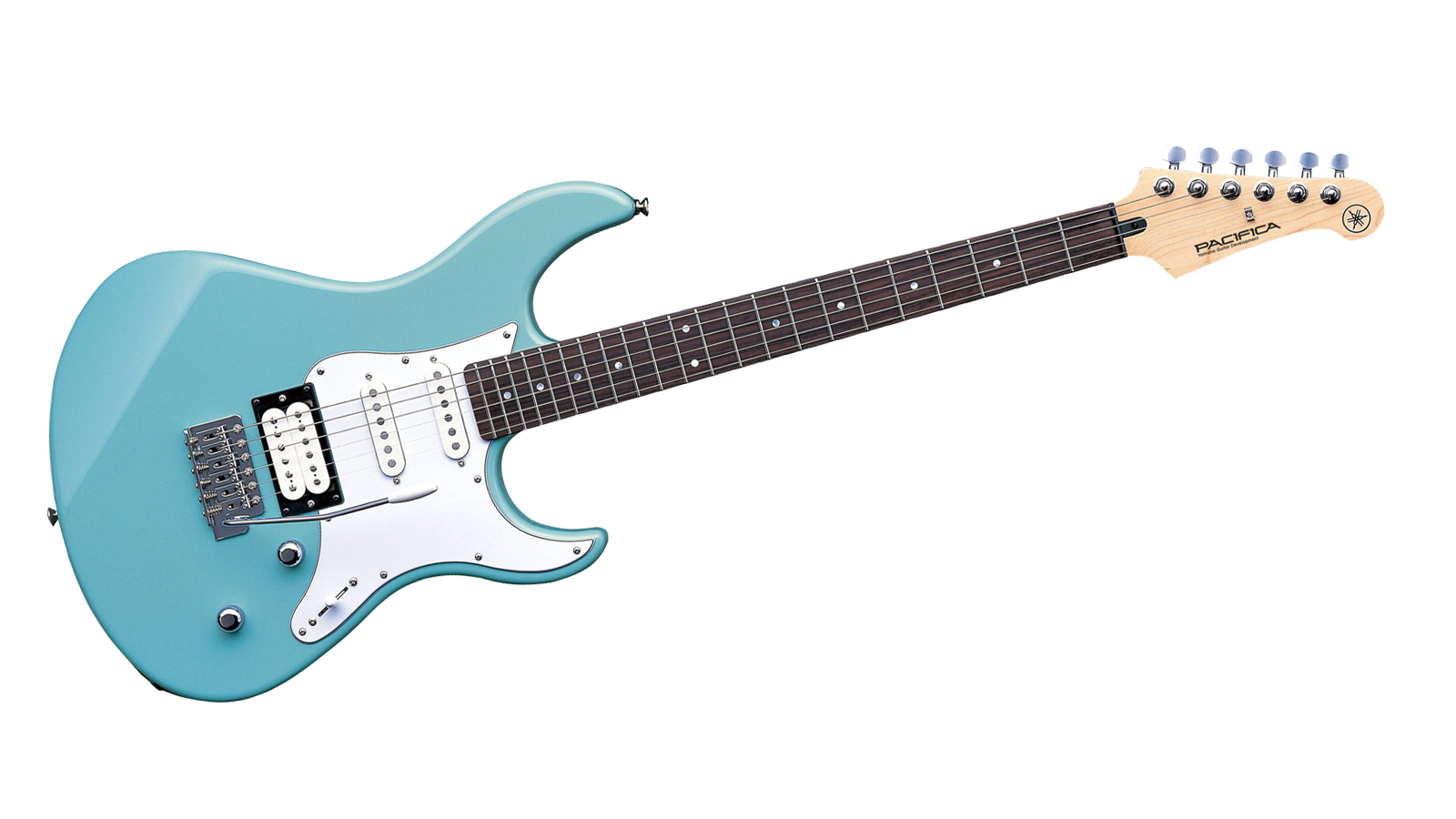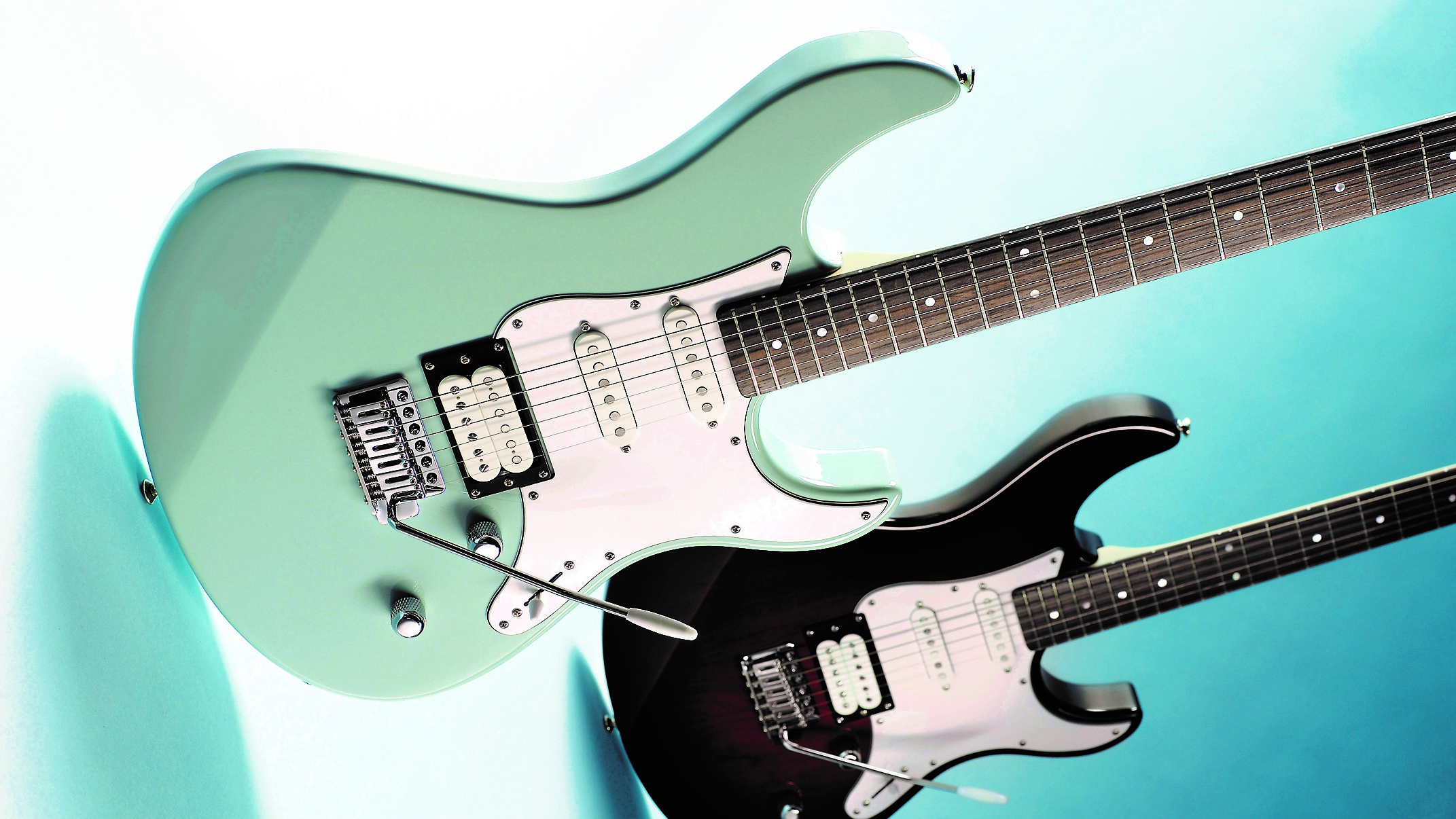Guitar World Verdict
There are plenty of reasons why the Yamaha Pacifica 112V is still one of the best options for beginners. Look past that learner image, however, and you’ll find a versatile, well-made guitar that will bring something extra to any player’s roster.
Pros
- +
Still looks great in 2021
- +
H/S/S pickups offer a broad tonal base
- +
Incredible value
Cons
- -
Unless you have a bigger budget to play with, there’s nothing to fault here
You can trust Guitar World
Yamaha’s Pacifica line of beginner electric guitars has been around since the ’90s, giving guitarists starting their playing career an amazing tool on which to begin their journey. The simple combination of a solid alder body, versatile pickups and high-quality construction meant it stood out a mile above some of its peers in the entry-level bracket. Back then, ‘starter’ guitars were often a battle to play, with poor build quality and cheap parts, causing many beginners to give up before they’d really got going. With the Yamaha Pacifica 112V, however, there was a guitar that would not only give you the best chance of developing your skills but would last long enough to be a partner for life.
There was always a view that the Pacifica 112 was the guitar your teacher would recommend, over the more recognizable models you’d seen your favorites players using. That was then, however, and this is now. So does the Yamaha Pacifica 112V still stand up to scrutiny?
Now, the construction, hardware and overall quality control of even the cheapest guitars has grown to such a point that you’ll struggle to find a truly bad one. Both Epiphone and Squier have far broader ranges and boast the kudos of being recognizable icon brands in the guitar world. So it’s through a slightly different lens we’ll carry out the Yamaha Pacifica 112V review, focusing on its performance not just as a guitar to learn on but also one which has something to offer more established players looking for something to add to a collection.

It had been a while since we had picked up a Yamaha Pacifica 112V. Almost 20 years in fact, which made this review something of a trip down memory lane. When I was learning, I had a choice between a Pacifica 112 and a Squier Telecaster for my first ‘proper’ guitar and, being a Mogwai fan, opted for the Tele in an attempt to emulate Stuart Braithwaite. Truth be told, I regretted it massively, mainly because quality control clearly wasn’t the highest priority with those entry-level ‘90s Squiers, so to have a pristine Pacifica arrive in the review studio was an exciting prospect on a number of levels. And, almost immediately, the error of my youthful ways was apparent.
In the flesh, the Pacifica 112V - the ‘V’ denotes Alnico V pickups - looks less Strat-esque than they do in the pictures, with more pronounced upper horns on the body and a more futuristic-looking headstock. The original Pacifica 112 line was almost synonymous with the natural wood finish which allowed the grain of its alder body to show through nicely. Sure, you could get them in black or sunburst, but the natural finish almost gave the 112 an identity of its own.
Tonally, there’s very little the Pacifica 112V cannot do.
Our review model came in a very neat Sonic Blue finish, which added a nice vintage character to the guitar. The rosewood fingerboard was perfectly playable, with even a hint of rounding at the edges which made for a comfortable playing experience. The maple neck felt almost satin, and there was no tackiness from our grubby hands as we played during one of the hottest summers on record.
Tonally, there’s very little the Pacifica 112V cannot do. The bridge humbucker doesn’t provide the highest output, so more extreme brands of detuned metal don’t come naturally to it, but just about anything else is fair game. We grew particularly fond of the neck pickup, especially with the tone control dialled down a little and a touch of overdrive. The alder body does provide some sustain - clearly, we’re not talking the equivalent you’d get from a solid lump of mahogany, but it does the job. With cleaner sounds, you get that sparkle and clarity you’d expect from the middle pickup, providing a perfect middle ground between the heft of the humbucker and the fast attack of the neck single coil.
If there are two words that sum up the Yamaha Pacifica 112V, they’d be simple and versatile. Simple because there’s not a huge amount to get your head around with these guitars, and versatile because they can comfortably handle most genres of music without any significant problems. What struck us more than anything, however, was the level of care and quality that has gone into what is - essentially - an entry-level, mass-produced guitar. It may not have the achingly cool silhouette of a Gibson Les Paul or Telecaster, nor the heritage of a brand like Fender, but what the Pacifica 112V does offer is a well-made, practical guitar that will serve both beginners and more advanced players well.

Specs
- Body: Alder
- Neck: Bolt-on maple
- Fingerboard: Rosewood
- Frets: 22
- Pickups: Custom wound Alnico V (SSH configuration)
- Hardware: Tremolo bridge, die-cast chrome tuners
- Control: Five-position pickup selector, master volume, master tone
- Contact: Yamaha
Chris Corfield is a journalist with over 12 years of experience writing for some of the music world's biggest brands including Orange Amplification, MusicRadar, Guitar World, Total Guitar and Dawsons Music. Chris loves getting nerdy about everything from guitar gear and synths, to microphones and music production hardware.












